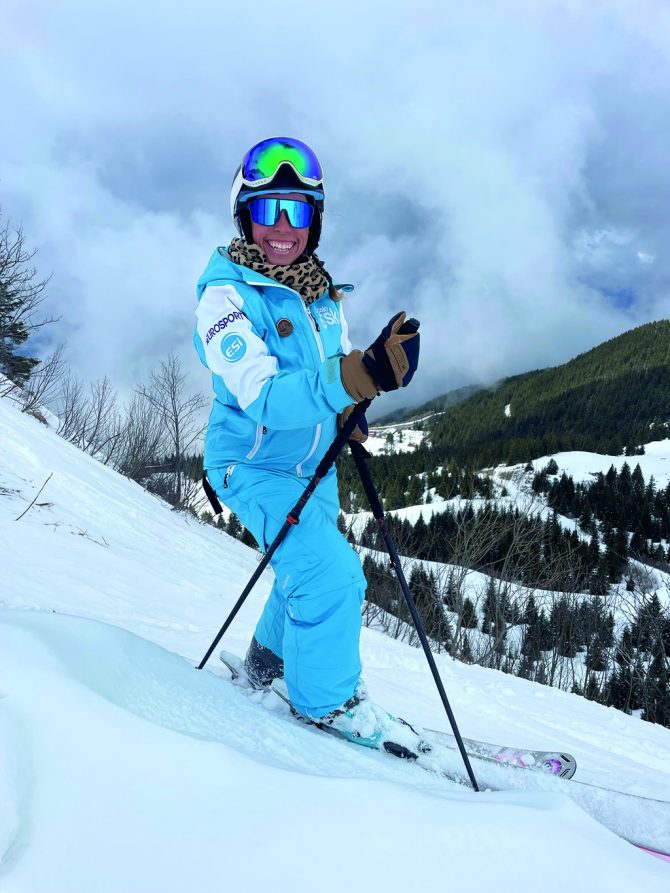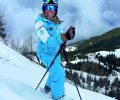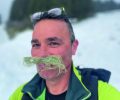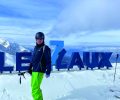On Piste Patrol in the French Alps
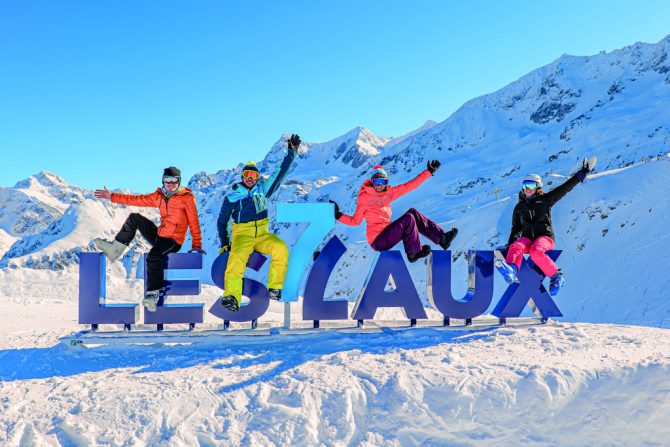
Meet some of the piste workers in Les Sept Laux, who keep the popular ski resort running smoothly.
Steph Chetoux has quite the arsenal of weapons at his disposal. At any one time, locked in a huge metal box at the top of the mountain, this ski patroller might have between 200kg and 300kg of ammonium nitrate explosives. He and his colleagues – the team in charge of skier safety at the French Alpine resort of Les Sept Laux use these bombs early in the morning, loosening precarious slabs of snow in order to trigger avalanches safely before the skiers arrive on the pistes. Often they will shoot the explosives from cannons, or drop them from a helicopter. Occasionally they throw them by hand, like grenades.
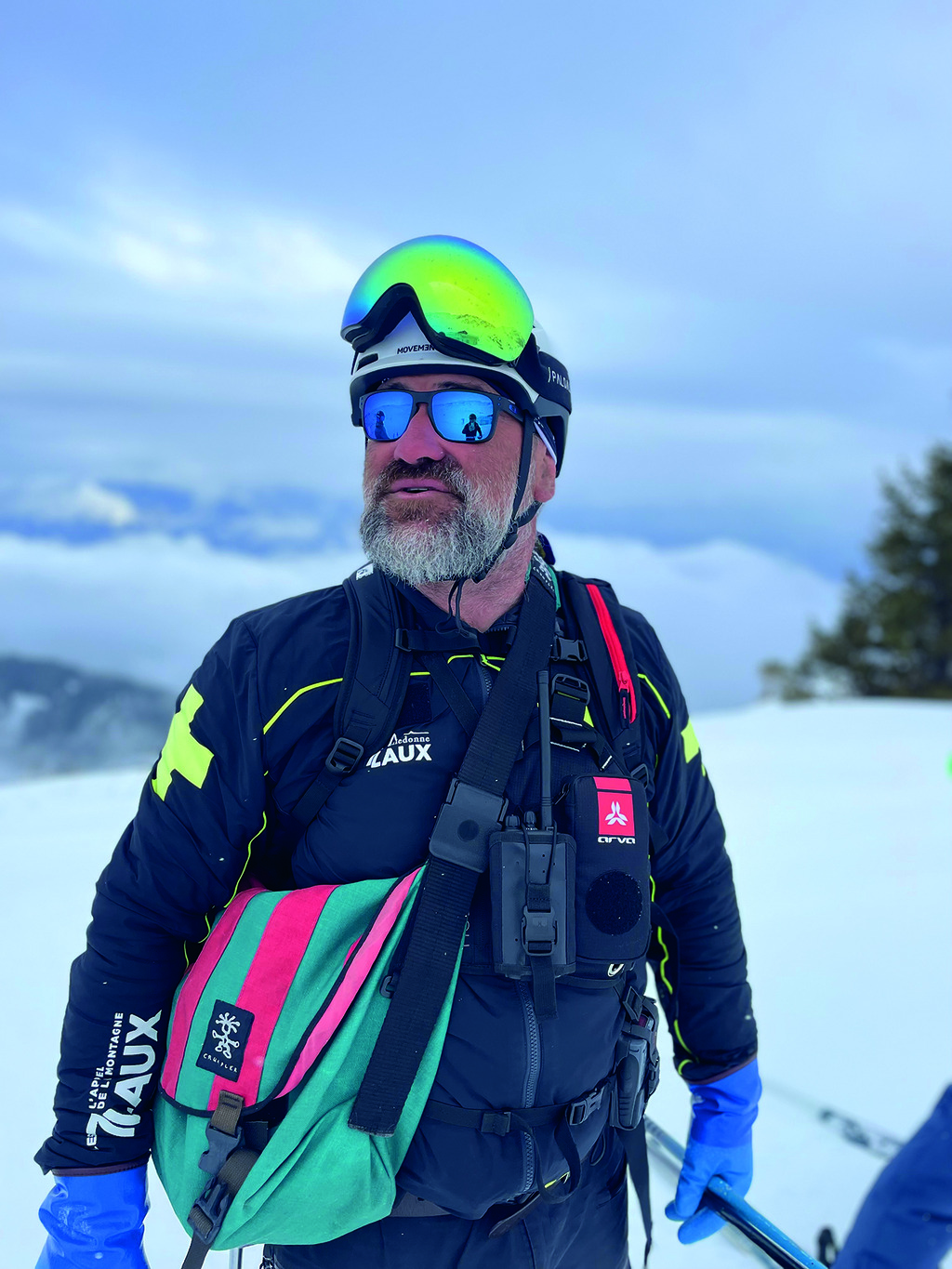
Ski patrol Steph Chetoux, © LES 7 LAUX
Steph has been working in ski patrol for the past 20 years, eight of them at Les Sept Laux. His safety record is excellent. Although he and his colleagues must obviously deal with skier and snowboarder injuries (particularly among the more hot-headed visitors), deaths are extremely rare. Steph is keen to maintain this record, especially as in 2005, in another resort, he himself had to be dug out of the snow after falling victim to an avalanche.
What worries him most of all nowadays is the rising number of collisions between piste-users. The problem stems from the design of modern skis which allow debutants to hurtle down the slopes really quickly within just a few days of learning. The expertly groomed slopes, with their smooth surfaces, create a rapid racetrack, even for beginners. And then there’s the lack of communication between skiers and snowboarders, the former naturally looking frontwards and the latter facing to the side of the slope all of which creates blind spots. No wonder crashes are becoming more common on busier days.
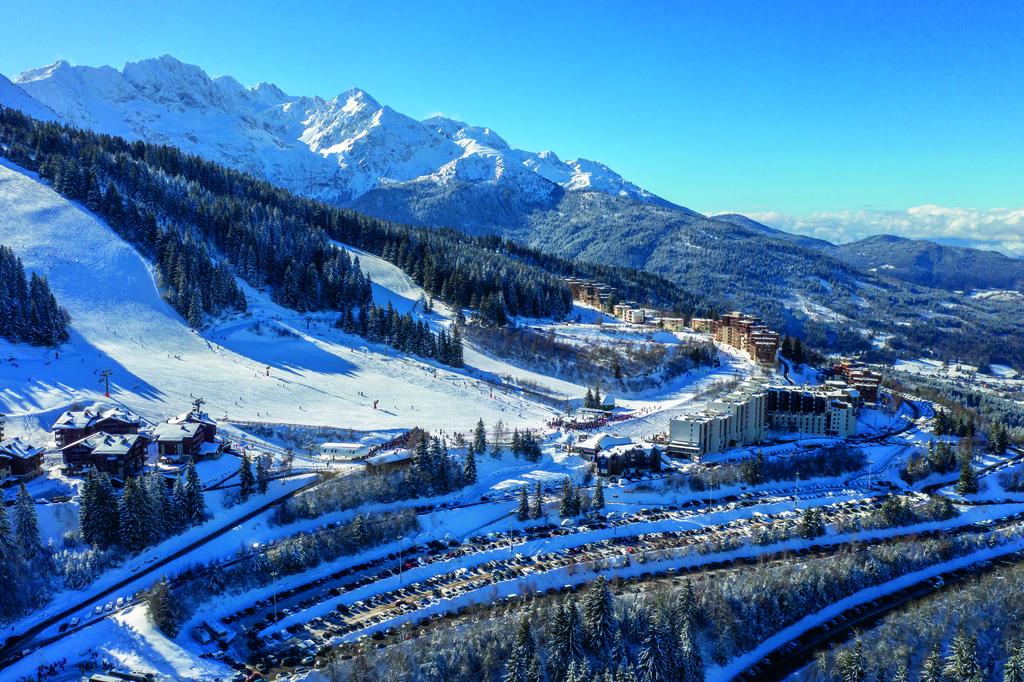
Les Sept Laux resort
What’s in a name?
Fortunately, the day I arrive at Les Sept Laux, the pistes are quiet. There are 51 in all (11 green, 14 blue, 19 red and seven black), stretching for more than 120km, served by 22 lifts, all spread across three villages – Pipay, Prapoutel and Le Pleynet – and rising from 1,350m at the lowest village up to 2,400m. But why the name Les Sept Laux? What are Laux? And why are there seven of them? It turns out no one’s quite sure. One of my ski guides tells me confidently ‘Sept Laux’ is a bastardisation of the French term ‘C’est là-haut’, meaning ‘it’s up there’, as indeed are all mountain resorts. The IGN (France’s national mapping authority) has a different theory: it explains that ‘laux’ means ‘lakes’ in the local dialect and that there are seven lakes in the mountains to the east. But I check on the map and there are well over seven – at least a dozen by my count. The official resort website, on the other hand, suggests that, when the town was founded, seven different communes amalgamated to create Les Sept Laux.
Then there’s a story from the early 19th century about the Comte de Barral who, to celebrate his marriage, commissioned a map of the local area on which was written the place name ‘Ceylau’. Distorted phonetically, this eventually morphed in the modern-day Les Sept Laux.
Locals don’t seem too concerned about the truth behind their resort’s name. More important for them is to enjoy the facilities on offer. Sure enough, there are some amazingly cheap packages available for skiers and boarders. Week-long lift passes start at €182 for adults and €112 for children (rising to €241.50 and €138.50 in high season). One incredible offer is a single-weekday pass for just €16 for senior citizens and €19.50 for children and students. In some resorts you couldn’t get two beers for that. Not that you come to Les Sept Laux for the beer; or the cocktails, for that matter. The après-ski scene here is so low-key it’s almost non-existent.
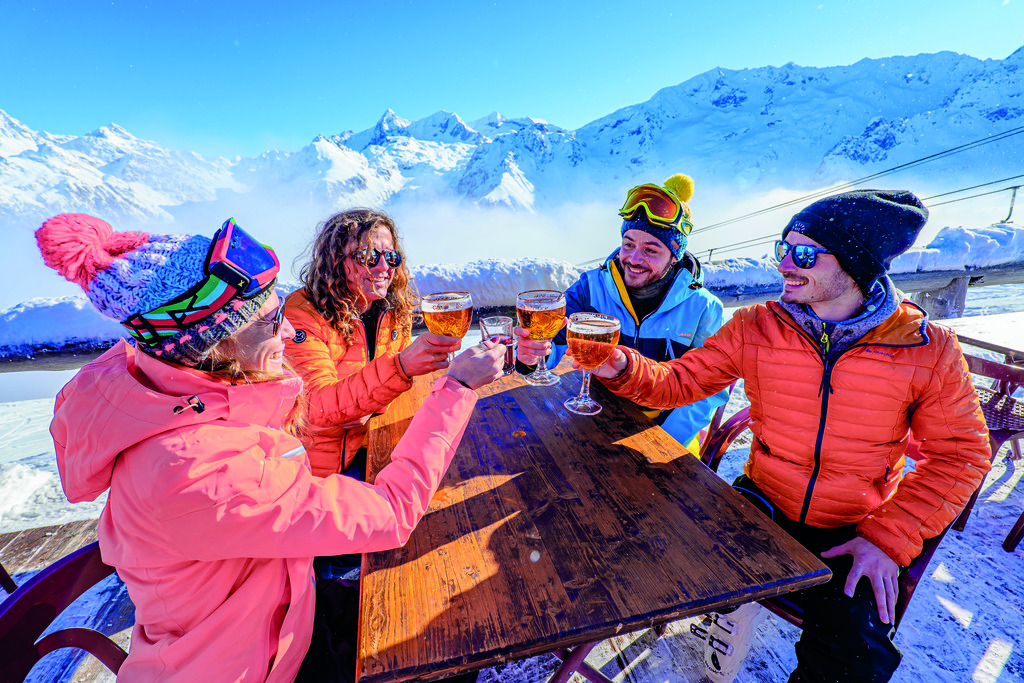
© LES 7 LAUX
Swapping skis for snowshoes
Instead the focus is on all the different winter sports available. Beyond traditional alpine skiing and snowboarding, there’s also cross-country skiing, ski touring, dog-sledding, tobogganing, luging and snowshoeing.
I’ve always been rather sceptical of the latter. Why walk uphill slowly on snow when you can ski fast down it? One evening, I joined a group of snowshoe hikers for an hour’s walk through the forest at dusk. With all the skiers packed up for the day and the sounds of nature dampened by the thick snow cover and fir-tree canopy, the hillside was almost silent; just the odd bird chirruping in the trees. Now I understood the appeal of snowshoeing: it offers a completely tranquil immersion in nature the exact opposite of the full-on adrenaline rush you get from downhill skiing. My guide, Pascal Papet-Lépine, told me of a special snowshoeing excursion he offers called Apé Rando, which, as the name suggests, combines apéritif with randonnée. As the sun goes down, you hike through the forest on your snowshoes, armed with an avalanche transponder, searching for a cache of food and drink that has been buried earlier in the snow. Once you’re close enough, the transponder will bleep, alerting you to the location of the cache. Then follows a boozy apéritif. Suddenly snowshoeing seems a lot more fun than I had imagined.
The next day I joined a group of more experienced skiers to try out Les Sept Laux’s legendary off-piste terrain. In a wide but fairly shallow bowl called Les Vallons du Pra, with steep valley walls on either side and the magnificently pointed Dent du Pra rising to 2,620m behind me, I made sweeping turns through thick powder. A couple of times, as I let speed get the better of me, I lost balance and somersaulted into the (thankfully very soft) snow. If I’d dared to take my eyes off the hill for a moment, I would have had amazing views across the Belledonne massif and the Haut Bréda valley, but that would have resulted in another tumble for sure.
Les Sept Laux’s position in the Massif de Belledonne, close to Grenoble, makes it an important weather station for Metéo-France, France’s national meteorological service. Steph has another string to his bow aside from skier safety. He also takes care of a miniature weather station, tucked away in the woods, halfway up the mountain. Every day, helped by an array of instruments, he measures the temperature, humidity, precipitation, wind speed, snow depth, snow temperature and snow density and reports it all back to Metéo-France.
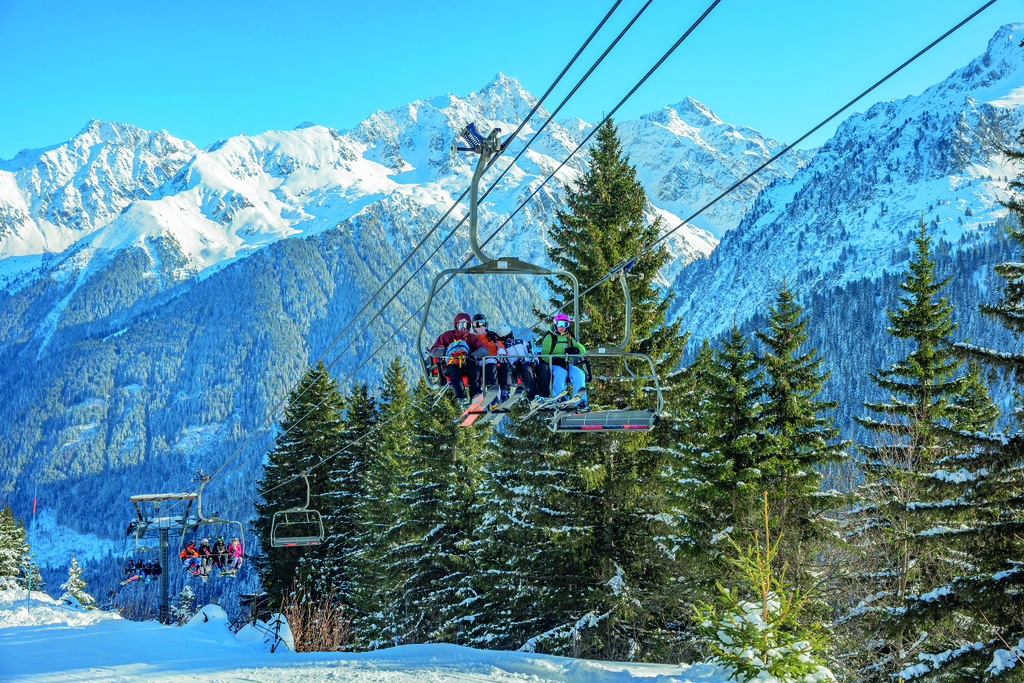
In the driver’s seat
One of his tools is a small plastic placard, with a ruler down the side and eight drawings depicting different types of snow or ice: neige fraîche, neige roulée, grains fins, grains ronds, faces planes, gobelets… each distinct type is an indicator of the conditions he and his fellow ski patrollers can expect on the rest of the mountain.
Another resort colleague who keeps a close eye on weather conditions is Guy Reymond Laruina, one of the snowcat drivers. The following evening Guy offers me a ride in his snowcat, or piste-basher as the British call them. In French it’s known as a dameuse. This 62-year-old has been operating them his entire working life.
Piste-basher drivers are the unsung heroes of ski resorts. We hear their snowcats bleeping in the distance while we sleep, or we spot their headlamps illuminating the slopes late at night, but otherwise we spare them little thought. Without their industrious grooming, though, skiing would be treacherous, and sometimes impossible.
Inside Guy’s snowcat, it feels like we’re in an aeroplane cockpit, with dozens of buttons, dials and flashing lights. There’s room for three people inside, the seats, high above the ground, offering perfect views through the large windscreen.
Above us, ten or so headlamps illuminate the mountain side, while a wide blade mounted on the front loosens and levels the snow beneath us and a rear-mounted tiller leaves that perfect corduroy finish that any early-morning skiers will be familiar with. Our progress is fairly slow, even slower when the piste incline becomes steeper. But the tank-like caterpillar tracks grip fast. The cab itself is reinforced so that, even in the highly unlikely event it capsizes, we won’t get crushed inside.
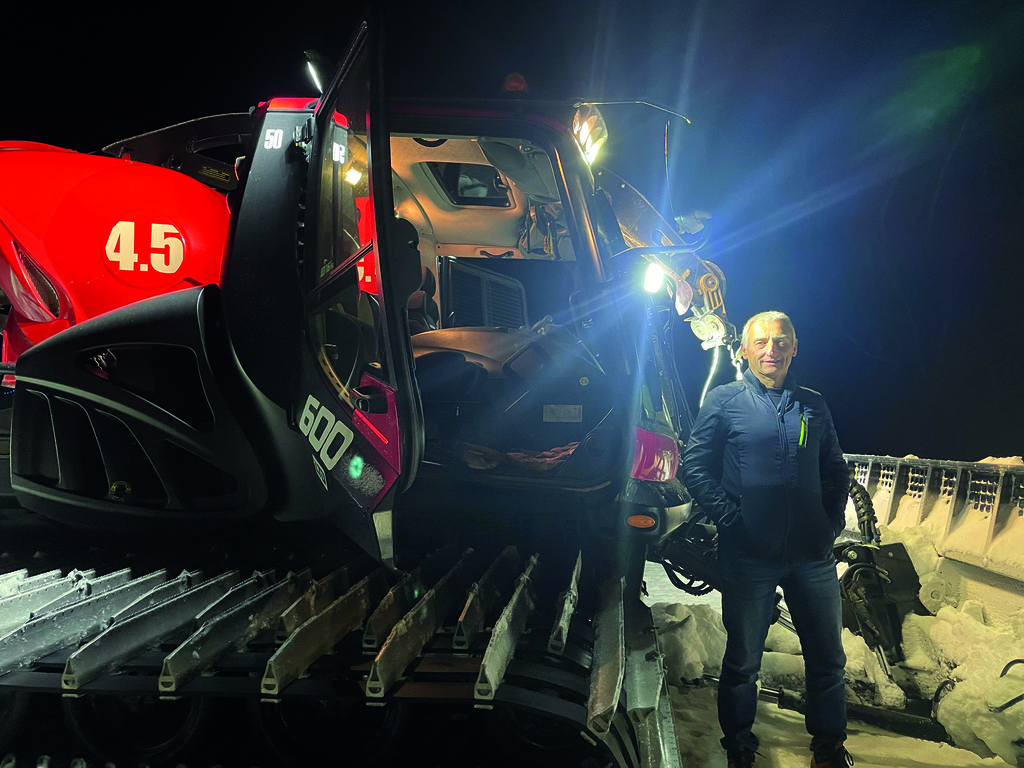
Guy and his snowcat
During the school holidays, the piste-bashers of Les Sept Laux invite guests to join them in their work. Tickets for the outing, called ‘Vis ma vie de dameur’, are drawn by lottery at the tourism office, with winners offered free rides. But Guy offers me something even rarer. He turns to me and asks if I fancy driving the snowcat myself. “Why not?” I reply.
“What’s the worst that can happen?”
As I swap seats with him, I suddenly realise there are quite a number of bad things that could happen. I might drive off the edge of a cliff, for example, rolling both of us down the side of the mountain.
In the event, I discover it’s a lot easier to drive a snowcat than I had imagined. Granted, the yoke-shaped control column is very sensitive – the slightest movement pulling you off course. But after a few minutes I get the hang of it. Guy keeps a careful eye on me. After 20 minutes or so, sticking to the shallower blue runs, I complete my task.
The next morning, up early on the slopes, I head for the same pistes Guy had allowed me to groom the night before. As I glide over the perfect corduroy pattern, I feel an enormous sense of achievement. This is, after all, my own work.
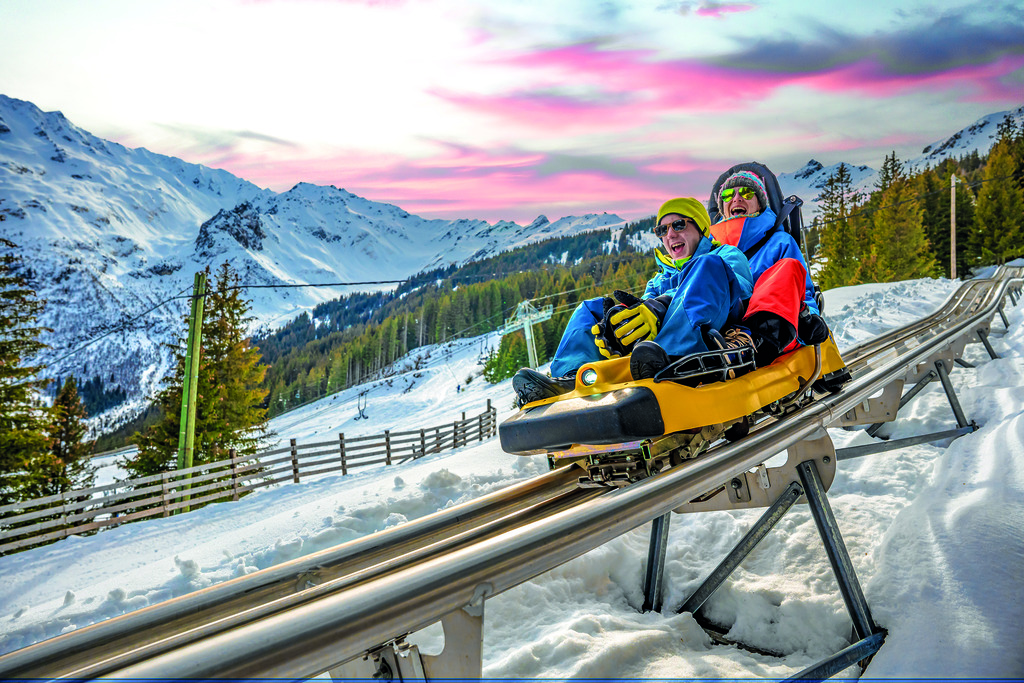
Other than skiing, the resort has plenty of activitie on offer
LES SEPT LAUX ESSENTIALS
GETTING THERE
Multiple British airlines serve both Lyon and Grenoble airports which are both around Ih 40m from Les Sept Laux
WHERE TO STAY
- Peak Retreats offer a seven-night, self-catered stay in a two-bedroom apartment at Les Granges des 7 Laux, priced from £496 per person, including lift passes and Eurotunnel crossing for one car. www.peakretreats.co.uk
APARTMENTS
- Club Sirius
- Village Club des Sept Laux
- Studio Le Pleynet
- Résidence Cévéo du Pleynet
- Studio Pleyne Lune
WHERE TO EAT
- Le Kaktuss Bar and brasserie with a sun terrace, right at the foot of the chairlift in Prapoutel. www.lekaktuss.fr
- Farinaud There a 360-degree view from this restaurant, 1,550m up in Pipay Self-service in winter: www.lefarinaud.com
- Le Rocher Blanc Bar, restaurant and crêperie in Prapoutel with a large terrace lerocherblanc.fr
From France Today Magazine
Lead photo credit : © LES 7 LAUX
Share to: Facebook Twitter LinkedIn Email
More in french alps, mountains, ski resort, skiing
Leave a reply
Your email address will not be published. Required fields are marked *

